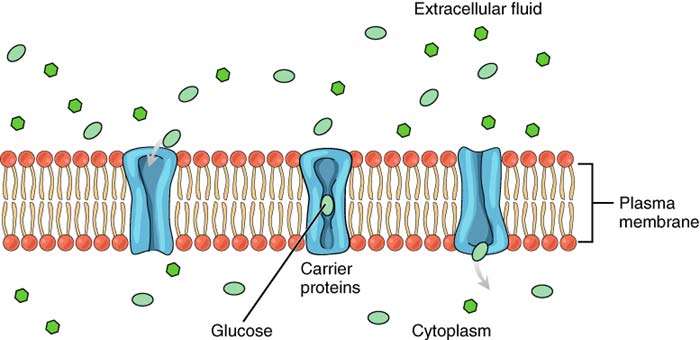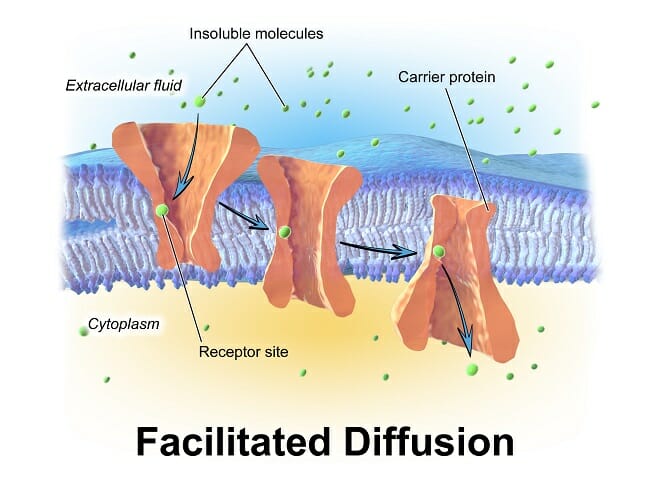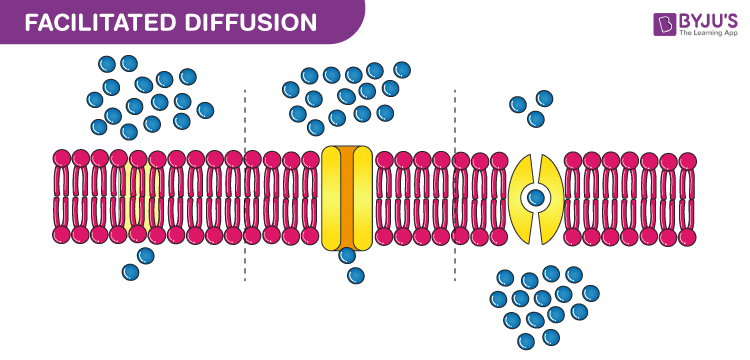Describe the Process of Facilitated Diffusion
Some of the differences between osmosis and facilitated diffusion are. In this article we will describe the process of diffusion discuss the different types of diffusion and consider the clinical relevance of this process.

What Is Facilitated Diffusion Definition Importance Examples
Diffusion is the movement of a gas or liquid from an area of high concentration to an area of low concentration.

. Facilitated diffusion also known as facilitated transport or passive-mediated transport is the process of spontaneous passive transport as opposed to active transport of molecules or ions across a biological membrane via specific transmembrane integral proteins. Although diffusion is a slow process it aids in transporting moleculessubstances efficiently. It is the diffusion of solutes across a.
Diffusion is essential to the coffee-making process. Facilitated diffusion is a biological transport process in which specific structural components of biological membranes interact with specific solutes or classes of solutes significantly increasing their rates of crossing the membrane. Most of the time the former process takes place as it requires no energy from the cell.
Describe the process of diffusion. Impermeable differentially permeable semipermeable selectively permeable impermeable which of the following requires a membrane-bound carrier for transport. Facilitated Diffusion Definition.
Diffusion Movement of molecules from Movement of molecules from higher concentration to lower higher concentration to lower No energy is required. Diffusion is different from facilitated diffusion because it is where particles move from an area of high concentration to an area of lower concentration. Concentration The way Oxygen moves across a membrane No energy is required.
Facilitated diffusion is the diffusion process used for those substances that cannot cross the lipid bilayer due to their size andor polarity Figure 318. Facilitated diffusion does not directly involve high-energy molecules like adenosine. Facilitated diffusion occurs through transmembrane proteins.
Osmosis The way oxygen moves across a membrane No energy is required. Facilitated diffusion is the movement of a molecule from an area of high concentration to an area of lower concentration with the help of a protein channel or carrier. The cell membrane in the model remains intact throughout the process.
Facilitated diffusion can be described as the aided diffusion. A common example of facilitated diffusion is the movement of glucose into the cell where it is used to make ATP. Facilitated diffusion is the spontaneous passage of molecules or ions across a biological membrane passing through specific transmembrane integral proteins.
Glucose molecules are transported across cell membranes by facilitated diffusion or active transport. The generic molecules in the previous animation used a channel protein to enter the cell. Facilitated diffusion involves the use of a protein to facilitate the movement of molecules across the membrane.
Facilitated diffusion is the transport of substances across a biological membrane through a concentration gradient by means of a carrier molecule. Which of the following does not describe the plasma membrane. A John has blood Type A and her mom has B blood type As Johns mom has B blood group then John.
Facilitated diffusion on the other hand is the process of spontaneous passive transport of molecules across a biological membrane via specific trans-membrane integral proteins. Solution for Describe facilitated diffusion. Mechanism of Diffusion Diffusion is the movement of a molecule down a concentration gradient from an area of its high concentration to an area of its low concentration.
Facilitated diffusion is a membrane transport method by which molecules move across the plasma membrane through the concentration gradient with the aid of transmembrane proteins. Since the transport of molecules occurs through the concentration gradient facilitated diffusion does not use cellular energy for the transport of molecules. The model shows the process of endocytosis.
Facilitated diffusion occurs with the help of some molecules. Facilitated diffusion on the other hand is the process in which molecules cannot be directly diffused across the membrane pass through special protein channels. Which statements describe the process.
The model illustrates a process by which a substance is taken up by a cell. Simple diffusion occurs through the phospholipid bilayer. In other cases the protein changes shape allowing molecules to pass through.
When glucose molecules move into the cell by facilitated diffusion the concentration gradient plays an. With regard to the ABO blood types in humans determine the genotypes of the individuals below A. In some cases molecules pass through channels within the protein.
The process shown in the model requires energy from the cell. Simple diffusion facilitated diffusion filtration osmosis. Facilitated diffusion is a passive movement of molecules across the cell membrane from the region of higher concentration to the region of lower concentration by means of a carrier molecule.
Osmosis involves the movement of water molecules. Active transport indirectly requires energy from the hydrolysis of ATP. The model shows the process of facilitated.
2 rows Facilitated diffusion is the process of transporting particles into and out of a cell membrane. Facilitated diffusion is a form of facilitated transport involving the passive movement of molecules along their concentration gradient guided by the presence of another molecule usually an integral membrane protein forming a pore or channel.

Facilitated Diffusion Definition Examples Quiz Biology Dictionary


Comments
Post a Comment